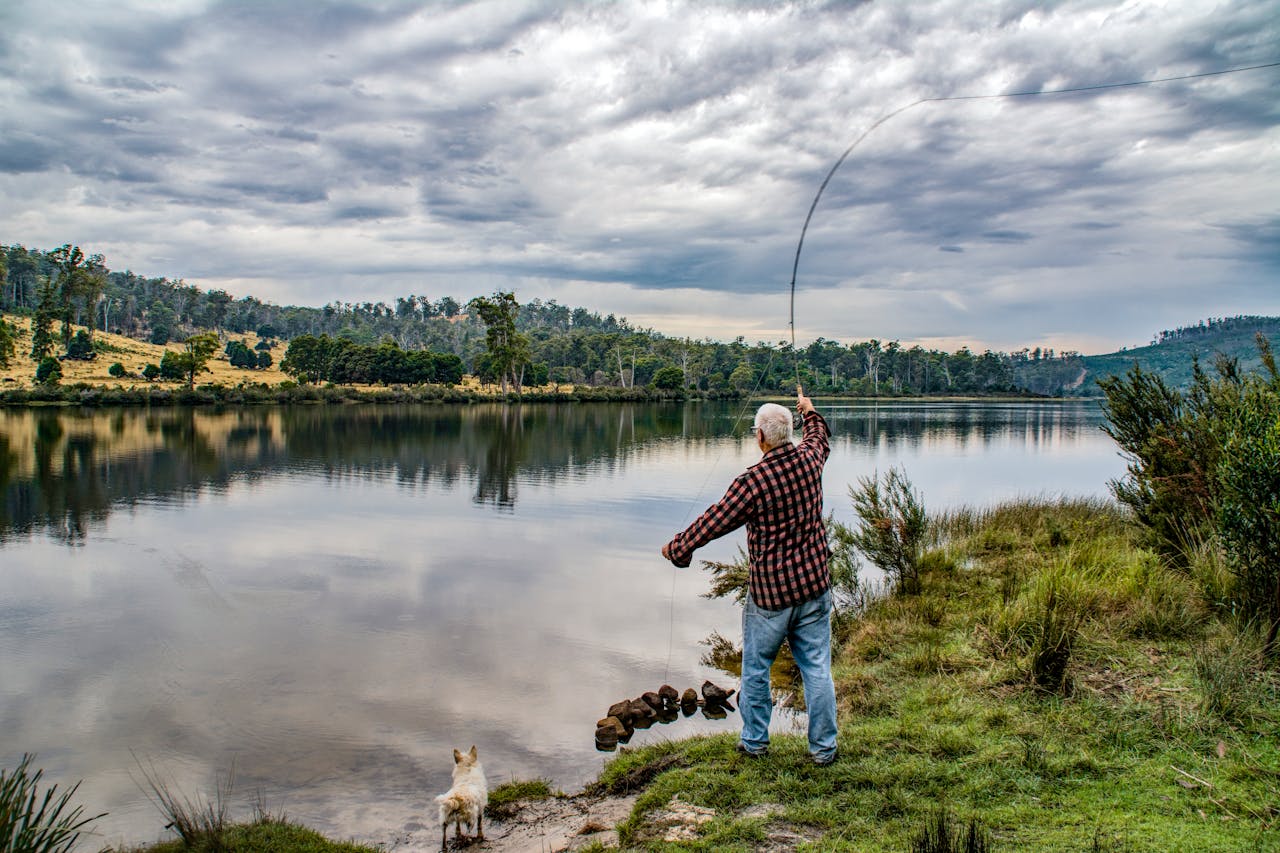Fly fishing is more than just a pastime.It’s an art that requires patience, skill, and an intimate knowledge of nature. Among the most prized catches for fly fishermen are trout and grayling. These fish provide a unique challenge, making the experience of landing one all the more rewarding. Whether you're a seasoned angler or new to the world of fly fishing, here are some tips to help you catch these beautiful fish.
Understanding Your Target: Trout and Grayling
Trout:
Known for their elusive nature, trout are often found in cold, clean waters. Whether it’s a rainbow, brown, or brook trout, they thrive in streams and rivers with strong currents. Their preference for specific flies can change with the seasons, water temperature, and even time of day.
Grayling:
Grayling are instantly recognizable by their distinctive, sail-like dorsal fin. They are generally found in clear, fast-moving rivers, often in similar environments to trout. While grayling are less finicky than trout, their agile movements and speed make them challenging to catch.
Essential Gear for Fly Fishing
When targeting trout and grayling, having the right equipment is essential:
- Rod and Reel: A 4-6 weight rod is ideal for these species, giving you enough finesse for presentation while providing enough backbone to handle larger fish.
- Fly Selection: Trout can be selective eaters, while grayling are typically less picky. Having a mix of dry flies, nymphs, and streamers is important. Popular choices for trout include Adams and Elk Hair Caddis. For grayling, flies like the Red Tag or Griffith’s Gnat work well.
- Waders and Boots: Trout and grayling are often found in cold, fast waters, so having sturdy waders and boots with good traction is crucial for safety and comfort.
Techniques for Success
Reading the Water:
One of the most important skills for any fly fisherman is learning to read the water. Trout and grayling often seek out specific areas in a river or stream. Look for:
- Riffles and Pools: These areas provide cover and food for both species. Trout often hang out just behind rocks in riffles, waiting for food to drift by.
- Undercut Banks: Trout like to hide under the safety of an overhanging bank, especially when the water is clear.
- Deeper Channels: Grayling can be found in deeper water, where they’ll rise to grab drifting insects.
Fly Presentation:
When it comes to trout, presentation is key. A delicate cast with minimal splash will keep these wary fish from spooking. When fishing dry flies, aim for a natural drift with the current. For nymphs, try a dead-drift technique, letting the fly bounce along the bottom where trout are likely feeding.
Grayling are known for rising to surface insects, so dry flies work well, especially in the late summer months. They aren’t as picky as trout, so a well-presented fly will often tempt them to bite.
Seasonal Considerations
Both trout and grayling behavior can vary by season:
- Spring and Fall: These are the prime months for catching trout as they are more active in cooler water. Grayling are also more aggressive in the fall as they prepare for winter.
- Summer: Early mornings and late evenings are best for trout during the hot months, as they tend to stay in cooler, deeper water during midday. Grayling, on the other hand, remain fairly active throughout the summer.
Conservation Matters
Fly fishermen are known for their respect of nature and fish populations. Always practice catch and release to ensure the survival of both species for future generations. Using barbless hooks and wetting your hands before handling fish will reduce stress on the trout and grayling you catch.
With these tips in mind, you're ready to tackle the rivers and streams in search of trout and grayling. Whether you're wading through a swift-moving current or casting to a quiet pool, the excitement of landing these fish is unmatched. Happy fishing, and remember to enjoy the serenity of the great outdoors while you're at it.
